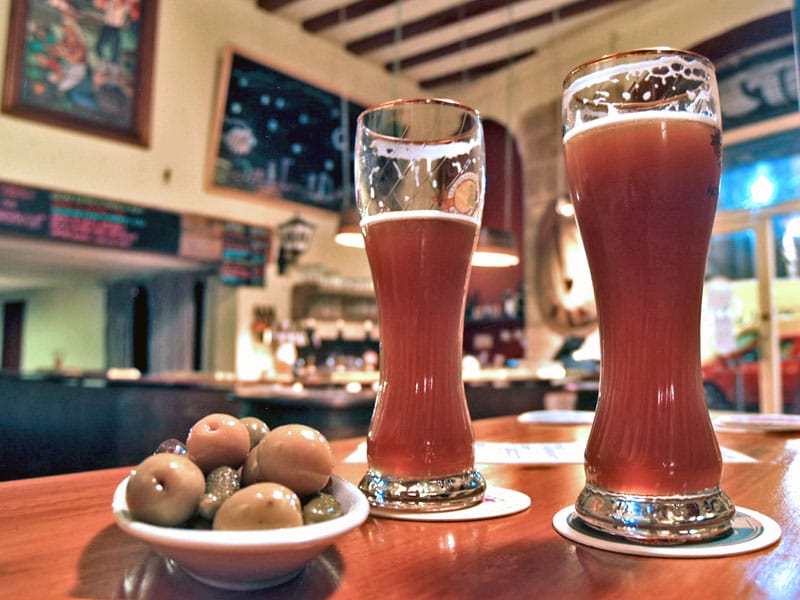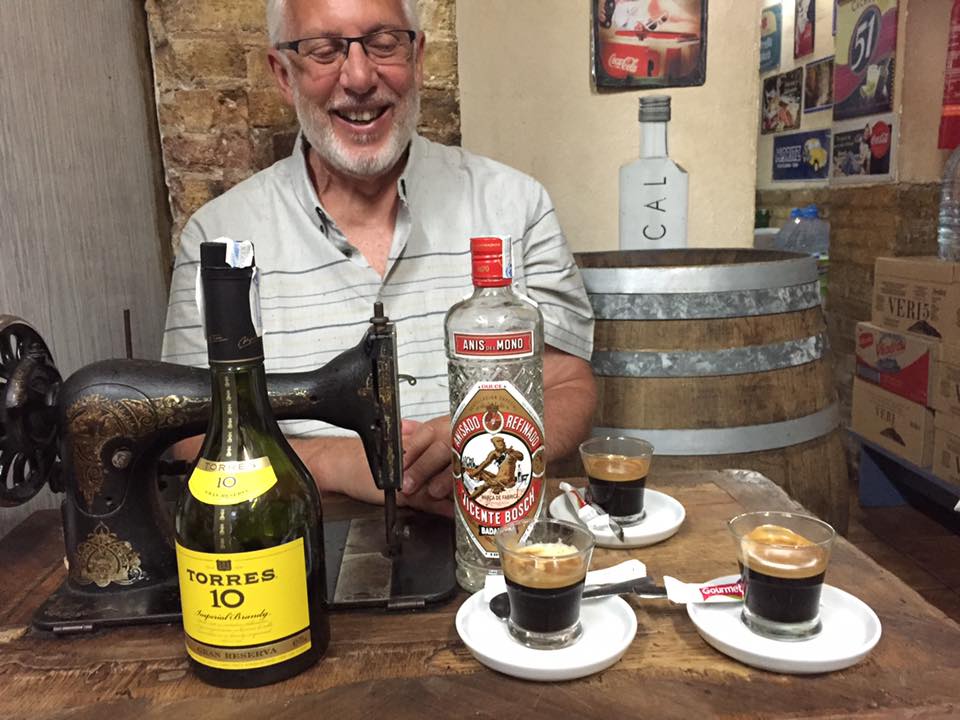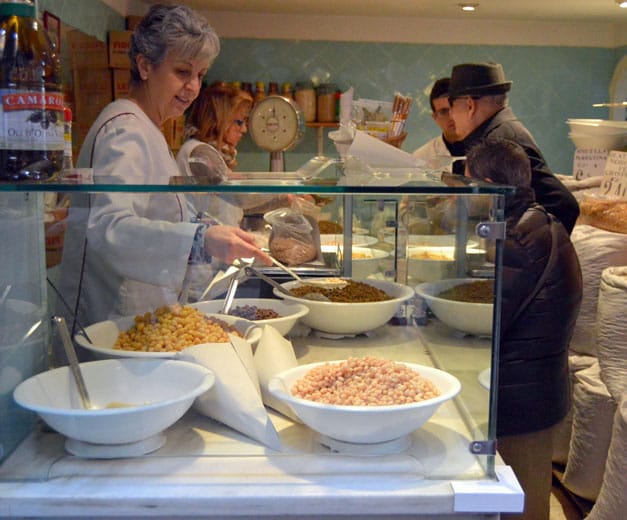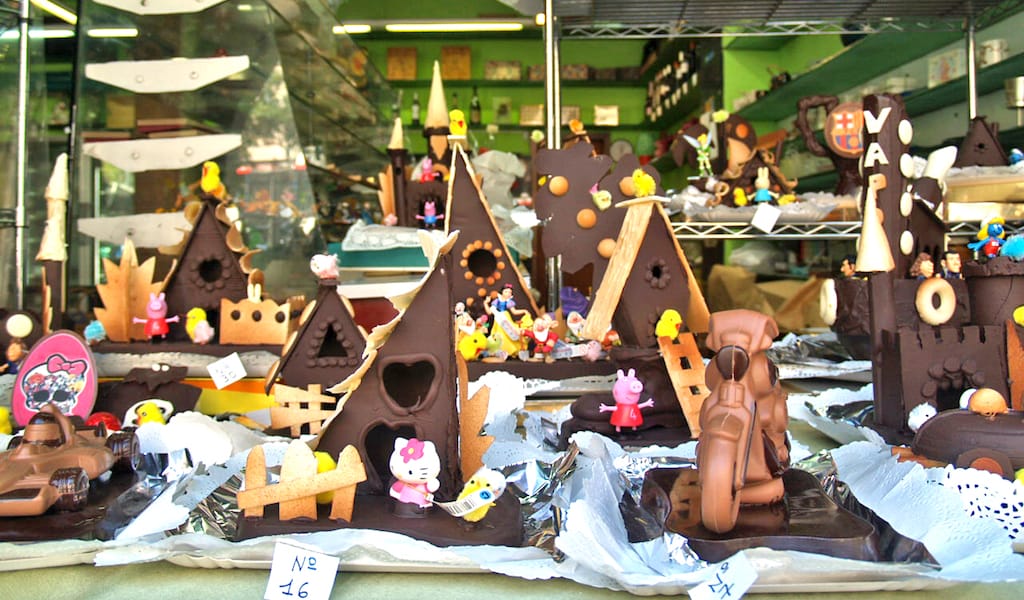Editor’s note: We regret to report that La Cerveteca has closed.
Once a mostly beer-free country, Spain – traditionally a land of wine drinkers – has recently started to develop a taste for the sudsy beverage, and Catalonians seem to have been the main pioneers behind this growing trend. The number of local craft breweries is increasing and so is the number of beer fans, who are also learning how to brew the drink at home. Put it all together and you have a young and adventurous market that is ready to experiment with tastes and textures to create stellar new beers with a distinct Mediterranean flavor.
In the last six years, the number of craft beer brands and microbreweries based in Catalonia has shot up almost exponentially, from about 10 to almost 200, according to Jordi Expósito and Joan Villar, authors of Guia de Cerveses de Catalunya 2013, a guide to Catalonian beers. Behind this brewing storm of beer foam, there are a couple of possible influences: the Catalan passion for cooking and long tradition of producing wine and other alcoholic spirits, and – perhaps more significantly – the Spanish financial crisis, which has encouraged many new entrepreneurs to broaden their horizons.
Is now the time for beer in Spain, where the beverage has for centuries played second, third or even fourth fiddle to wine and other drinks? So far, the initial spark has come from microbreweries. Currently, all Spanish breweries must buy malted grain from England, Germany and other countries, since the grain market in Spain is not geared towards supplying the beer industry. But the rising ranks of local producers and their wish to develop a beer with its own Catalan personality may drive the demand for locally produced grain. For now, though, the “local flavor” of Spanish beers comes from the production process or from local ingredients that are sometimes used, such as citrus fruits, peppers, figs and even mushrooms.

The first Catalan brewery to get the craft beer ball rolling was Llúpols i Llevats, established in 2005 in Hospitalet de Llobregat, southeast of Barcelona city, by Àlex Padró, his wife Carme and his friend Raül. They started with three beers under the Glops label and now produce 11 different beers to suit a variety of tastes. Meanwhile, in Barcelona, the pioneer microbrewer, Birra 08, takes its name from the city’s postal code, and the beers it produces are numbered after city districts. The 08003 Barceloneta, named after a famous neighborhood on the beach, is a summer ale-style beer with tropical flavor notes, an intense body and a slightly bitter taste at the end – a perfect thirst-quencher after a swim in the sea.
But perhaps the first “official” craft beers in Catalonia were made beginning in 1996 by La Cervesera Artesana, a unique brewpub in Barcelona’s Gràcia neighborhood. The place is a large venue, seemingly inspired by English pubs, where you can see the production area through a glass wall. Under the brand name Iberian, the pub offers seven beers that are made following traditional English methods but with ingredients as idiosyncratic as the typical Catalan mushroom ceps, which is used in their Iberian Boletus. In 2011, the venue ran a social media campaign, “Brewed By You,” to produce a beer with a special ingredient chosen by fans and named after the person who submitted the winning entry. The ingredient that received the most votes was the chili pepper, and the company selected a local chili from Blanes (on the coast north of Barcelona) for its Iberian Príncep, a beer with a spicy taste, medium body and notes reminiscent of roasted coffee.
Is now the time for beer in Spain, where the beverage has for centuries played second, third or even fourth fiddle to wine and other drinks?
Another Barcelona microbrewery turning out interesting craft beer with local flavors is Reptilian, producer of Thymus, a medium-bodied white beer made with organic spelt and enhanced with thyme and other spices, which transports the drinker to the woods of Catalonia. But perhaps none is so close to the deep essences of the Catalan “terroir” as Garnatxa Beer, an ale cuvée made by Priorat Beer & Co, a craft brewery from Falset (Tarragona). Aged in French oak wine barrels, this beer incorporates the typical grape of the great wines from Priorat, the grenache (garnatxa in Catalan), which gives it pronounced fruity notes.
Perhaps the best way to taste a variety of local and international beer labels, as well as to hang out with local fans of craft beer, is to pay a visit to La Cerveteca, behind the Post Office building in a backstreet of the Barrio Gótico. A combination shop and bar, La Cerveteca offers about a hundred different beers from around the world, some available on draft. About 14 are Catalan craft beers, among them contemporary classics like Guineu, Ales Agullons, Birra 08, Almogàver and Garnatxa.
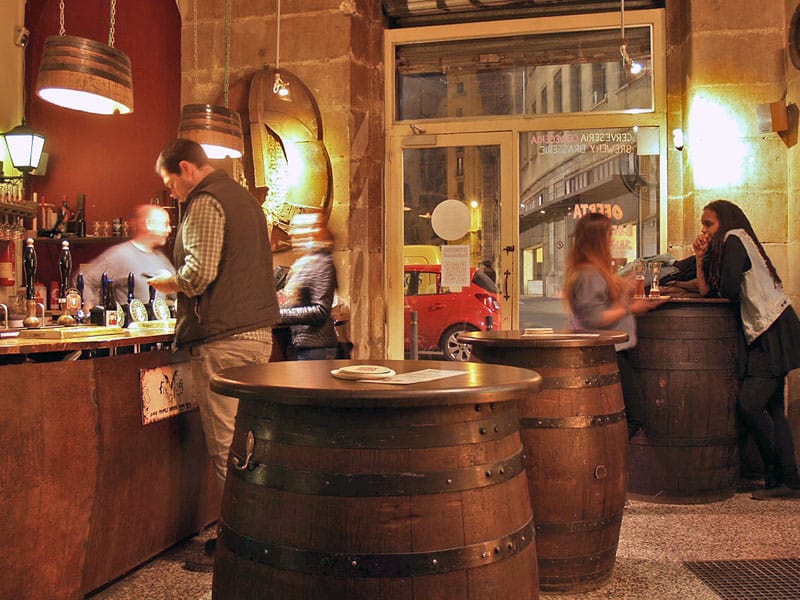
Excellent house-made tapas can be combined with the beers at La Cerveteca, for a uniquely local way to appreciate the beverage. Tasty tapas options include “Capricis de Mar i Muntanya,” a combination of Asturian cheese, anchovies from the Bay of Biscay and tomato or pepper marmalade; canned sardine fillets served with cow’s cheese and tomato confit; cecina, cured horse meat from Palencia; chorizo and morcilla (blood sausage) from Northern Spain; and various types of smoked or dried fish. There is also a selection of artisanal cheeses from around the country, including a mountain goat cheese cured in Iberian pork lard from Andalusia, a smoked blue cheese from Asturias, and several soft goat’s and sheep’s cheeses from Castile.
All this recent brewing activity has also led to the birth of Barcelona’s own international beer festival. Earlier this month, the city played host to the second Barcelona Beer Festival, following on the unexpected success of its first incarnation, which drew around 10,000 visitors (the number doubled in the second year). Visitors to this year’s festival partook of 300 different beers from 150 international brands – 55 of them from Catalonia – which were rotated through 50 taps over the course of the three-day event. There was a time where the only foam Barcelona locals would see in their city was on the waves of the Mediterranean Sea. That is clearly changing.
Published on March 14, 2013
Related stories
July 24, 2019
BarcelonaOur Barcelona bodega walk kicks off with a carajillo, coffee spiked with a shot of Catalan brandy. It's the best way to start a day of casual imbibing at some of the city's most iconic bodegas.
February 2, 2023
BarcelonaKnown in Catalan as mongetes – “little nuns,” as Catalonia’s oldest kind of beans resemble the pale face of a nun in her black habit – or fesols, from the Latin phaseolus, beans are an integral part of the region’s culinary traditions. If Catalan home cooking could be represented by a single dish, it would…
March 26, 2018
BarcelonaIn the weeks leading up to Easter, the best confectioners in Barcelona erect astonishing and fantastical chocolate constructions, called monas de Pascua, and display them in shop windows. For some lucky children, these chocolate sculptures will be gifted to them by their godparents on Easter Sunday.







































